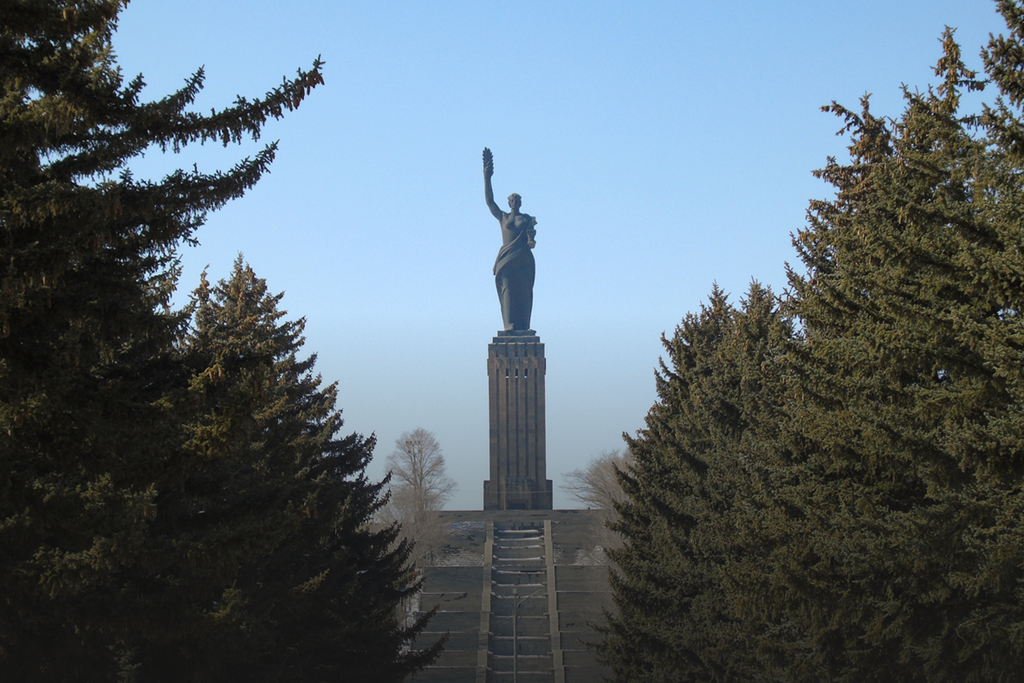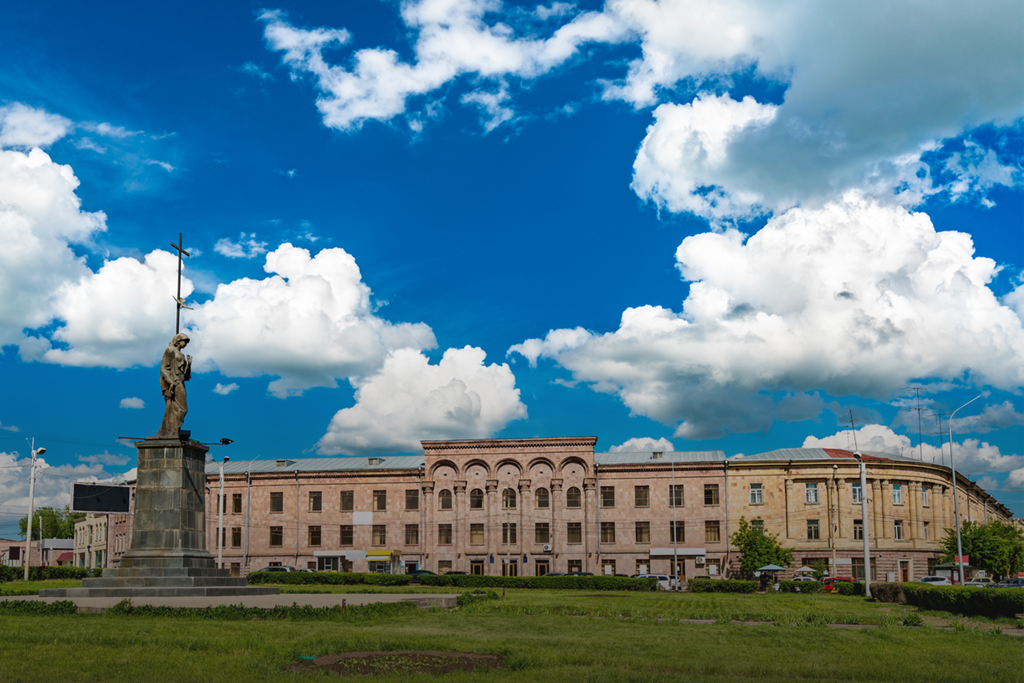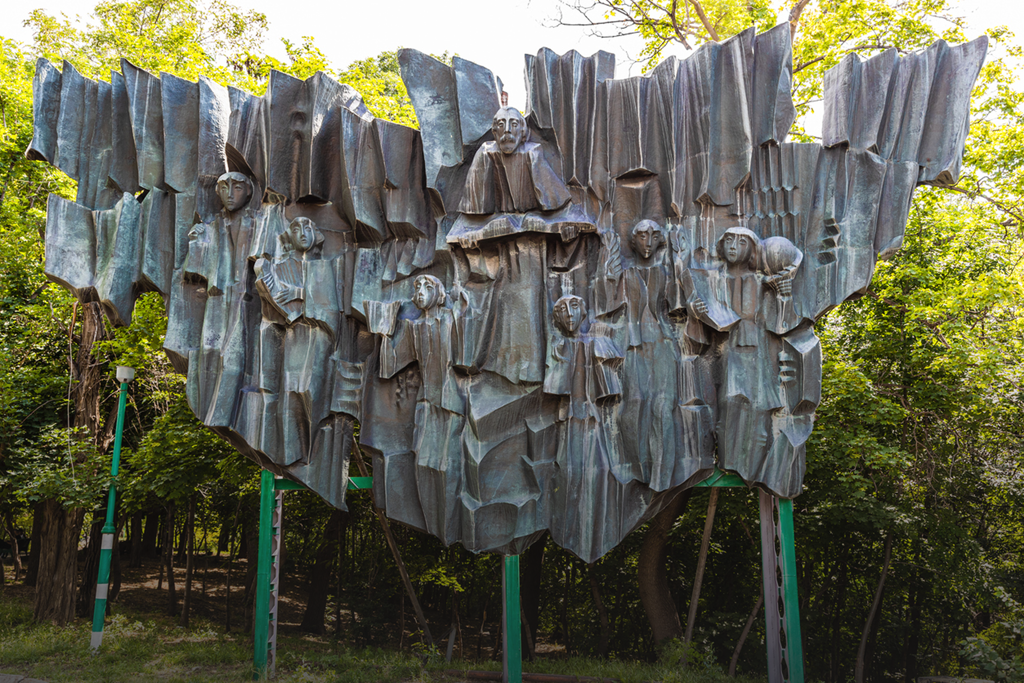A Glimpse into the City's Complex Past
Some cities erase the past. Gyumri doesn’t. Instead, it lets you walk through it—concrete, bronze, and unapologetically present. The Soviet era may be long gone, but its traces linger across the city in monuments that whisper, shout, or simply stand still—reminding us of the ideologies, tragedies, and transformations that have shaped this place.
If you’re the kind of traveler who seeks depth over decoration, welcome to Gyumri’s Soviet layer.
- Mother Armenia: Strength Cast in Stone
Start with the Mother Armenia statue in Victory Park—one of the tallest figures in the city. She stands stoically, gazing across the skyline, sword in hand, strength in posture. This isn’t just a tribute to victory in World War II—it’s a statement of identity, resilience, and pride. Behind her, old tanks rest like relics of a once-mighty army, and the view over Gyumri’s rooftops offers a sobering contrast between past and present.
Not far off, in neighborhoods and courtyards, you’ll find lesser-known monuments—dedicated to workers, teachers, soldiers, and even tractors. Some are cracked and overgrown, others oddly majestic in their brutalism. Each one offers a window into how life was idealized during Soviet times, and how memory still lingers in concrete.

- The Iron Fountain: Gyumri’s UFO
It looks like a prop from a retro sci-fi film—concrete rings, spiraling metal arms, and a hint of mystery. Officially known as the Iron Fountain, it was designed by visionary architect Artur Tarkhanyan in 1982 as part of a now-defunct amusement park. The 1988 earthquake devastated much around it, but the Iron Fountain stood firm, silent and strange.
Today, it’s dry and weathered, but still magnetic. You don’t just look at it—you stare, wondering what it meant then, and what it means now.
- The Weaver’s Statue: Hands That Built the City
Not all Soviet monuments are about war or glory. Some honor work. In the center of Gyumri, the Weaver’s Statue—sculpted in 1964 by Tereza Mirzoyan—pays tribute to the artisans whose textiles once defined the city’s economy. Her face is calm, her loom eternal. In a city of earthquakes and empires, the steady rhythm of weaving offered continuity.
Walk by her, and you may miss it. But pause—and she tells a quieter story: one of pride in craft and dignity in labor.
- Independence Square: From Lenin to Loss
Once named Lenin Square, Gyumri’s Independence Square carries layers of memory beneath its cobblestones. At its center stands a solemn figure—a young Armenian woman raising a cross in tribute to the victims of the 1988 Spitak earthquake. Around her, buildings from the Soviet era now serve new roles in a post-Soviet nation.
It’s a space where ideologies have shifted, but grief and memory still sit gently in the corners.

- Hidden Monuments and Forgotten Corners
Beyond the famous spots, Soviet echoes hide in courtyards and side streets. Busts of writers and soldiers. Sculptures of idealized laborers. A tiled mosaic here, a weathered slogan there. Many go unmarked, unnoticed—even by locals.
Monument to the Great Patriotic War: Echoes of Valor
In Victory Park, the Monument to the Great Patriotic War stands as a solemn reminder of the sacrifices made during World War II. Completed in the 1980s by sculptor Rafik Eghoyan, this memorial pays homage to the soldiers from Gyumri who fought valiantly on the Eastern Front. Its presence evokes reflection on the resilience and courage of those who served.
Monument to Song and Writings: Ode to Knowledge
Nestled within Gorky Park, the "Song and Writings" monument, crafted in the 1980s by Ferdinand Arakelyan, depicts a teacher surrounded by students. This sculpture celebrates the Soviet emphasis on education and cultural development, embodying the transmission of knowledge and the nurturing of young minds.
Teacher and Pupils Monument: Guardians of Learning
Also located in Gorky Park, this monument honors educators, symbolizing the pivotal role teachers played in shaping Soviet society. The figures convey a sense of guidance and mentorship, reflecting the state's commitment to literacy and enlightenment.
Monument to the Victims of the 1988 Earthquake
In the heart of Gyumri, a poignant monument stands in remembrance of the devastating 1988 Spitak earthquake. This memorial pays tribute to the thousands who lost their lives, serving as a place of mourning and reflection. It embodies the city's enduring spirit and the collective memory of loss and resilience.
Why It’s Worth the Walk
Gyumri’s Soviet echoes aren’t dressed up for tourists. There are no fences, no plaques explaining what to think. That’s what makes them special. They invite interpretation. They challenge you to reconcile beauty with ideology, ruin with resilience, propaganda with poetry. These aren’t just statues and fountains. They’re memory, cast in concrete.


